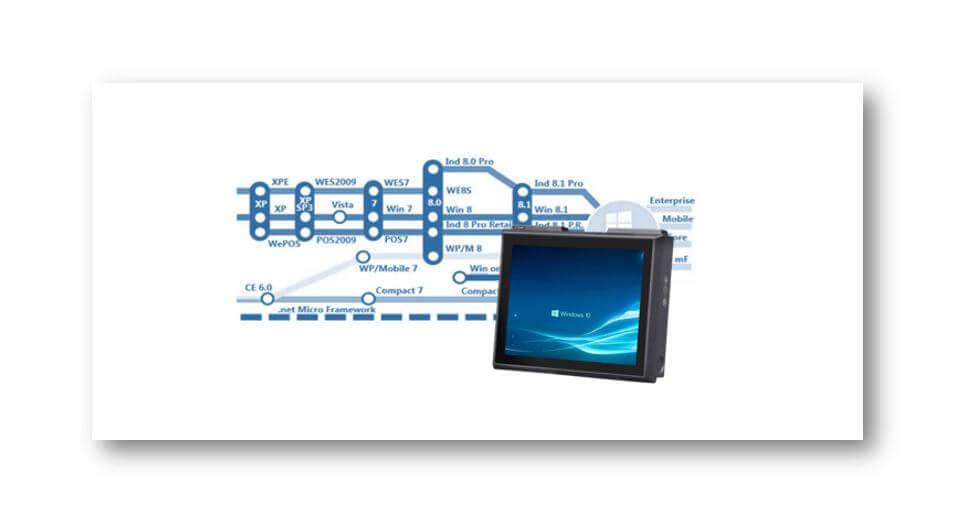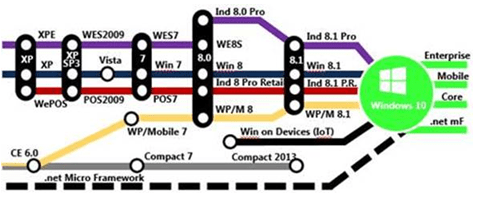
What you need to know about Windows 10 IoT in the rugged computing space
Windows 10 is Microsoft’s concept for the future of consumer and business operating systems, replacing all previous versions of Windows, which is undoubtedly having a significant impact on corporate IT systems and the mobile workforce. Here we’re taking a look at the specific benefits that the IoT version brings to the rugged computers space, guiding you through some of its pertinent features, and answering the most common questions about the impact of this new operating system (OS) on day-to-day business.
Integrated platform for all types of devices
Looking at the overall improvements in the latest Windows OS, it promises better performance, usability and a higher level of security than ever before. It’s an integrated platform with four main versions of the OS that will suit all types of devices, whether that’s consumer smartphones, tablets or laptops, or rugged computers in the industrial space. Software apps and drivers will be common to all four versions and possible to use on any Windows 10 device in a company.

All roads lead to Windows 10
Previously in the industrial computing world we had the full version of Windows for devices based on x86 processors, or Windows CE for devices based on simpler RISC processors. These were not compatible – an application compiled for Windows would not run on Windows CE and vice versa. With an unprecedented level of interoperability, Windows 10 is set to change this situation. For embedded devices, Windows 10 comes in a version called Windows 10 IoT, a family of Windows 10 editions that will replace Windows Embedded Systems in IoT devices like industrial gateways. These editions require the smallest possible footprint in terms of storage and resources required to run, and can be further optimised for specific tasks, while remaining fully compatible with any other Windows 10 edition.
Ability to control updates
Crucially, while consumer device versions of Windows 10 will be continuously updated over the air by Microsoft, the IoT versions have the ability to control how and when updates are received. The distribution of updates can be fully controlled, whether that means avoiding updates completely or simply deferring them until the most appropriate time, ideal for rugged computers.
Improved security with Windows 10
Another key upgrade in the new Windows OS is security, which has been completely reinvented to safeguard against modern security threats and protect data against leaks or theft. The system can be forced to boot to a desired universal app, and unauthorised USB peripherals can be denied access. Technologies like Secure Boot, BitLocker, Device Guard and Credential Guard help ensure devices are entirely protected.
Want to learn more?
We’re here to help and advise you on every aspect of rugged devices and industry data communications.
Please fill in the form and we will get back to you as soon as possible.
